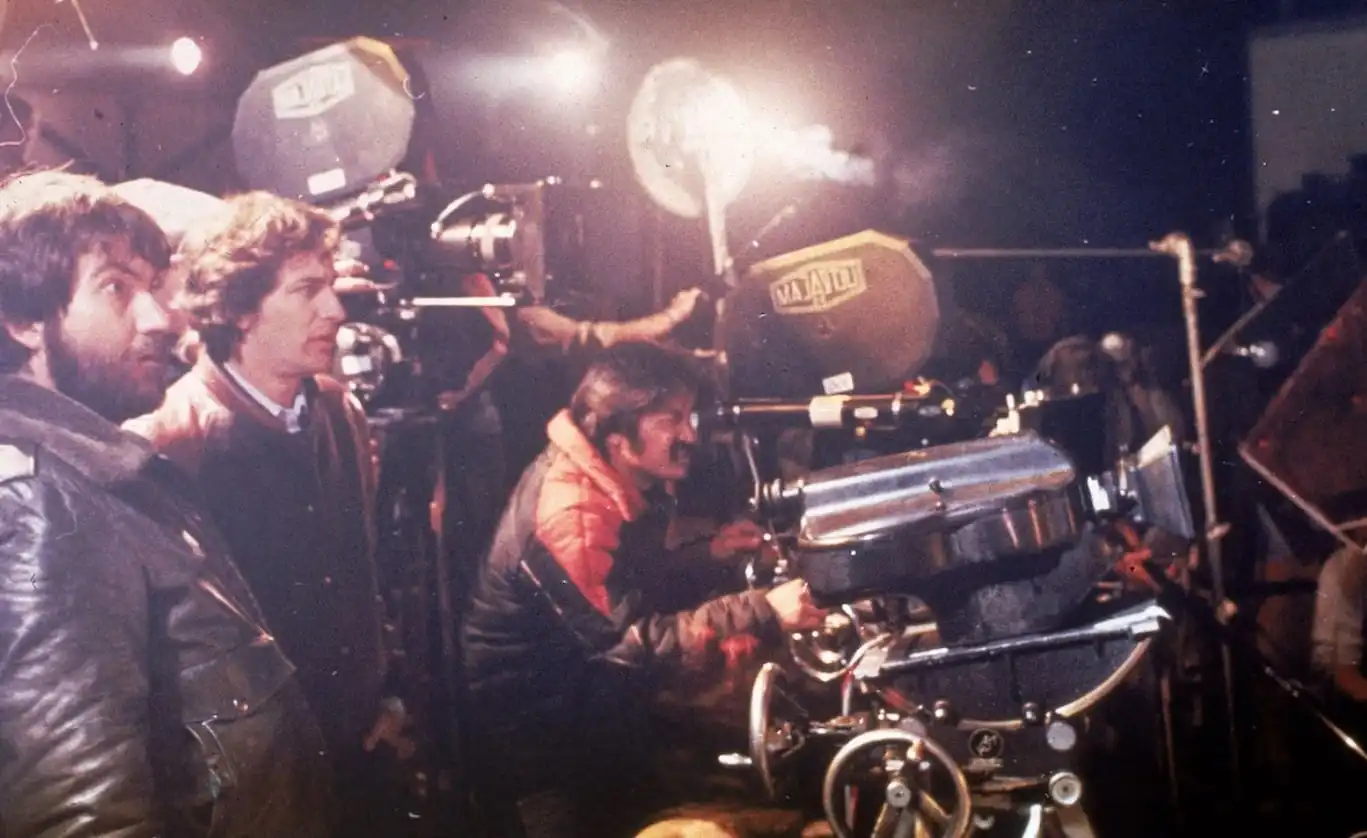The 1982 Movie Poltergeist Used Real Skeletons As – tymoff stands as a watershed moment in cinematic history, blending horror, suspense, and controversy in equal measure. Directed by the legendary Tobe Hooper and produced by the iconic Steven Spielberg, the film is a masterclass in storytelling and special effects. Yet, beneath its polished surface lies a disturbing truth: the use of real human skeletons in certain scenes. This article aims to explore the multifaceted legacy of Poltergeist, shedding light on its production, impact, and the ethical questions it continues to provoke.
The Making of The 1982 Movie Poltergeist Used Real Skeletons As – tymoff:
The 1982 Movie Poltergeist Used Real Skeletons As – tymoff emerged during a golden age of horror cinema, a period marked by bold experimentation and boundary-pushing creativity. Tobe Hooper, renowned for his work on The Texas Chain Saw Massacre, brought his signature style to the director’s chair, while Steven Spielberg’s visionary storytelling elevated the project to new heights. Together, they crafted a film that transcended the genre, delivering thrills, chills, and unforgettable moments of cinematic magic.
The Shocking Revelation:
For all its acclaim and accolades, The 1982 Movie Poltergeist Used Real Skeletons As – tymoff is perhaps best remembered for the controversy surrounding its production. The revelation that real human skeletons were used in certain scenes sent shockwaves through the industry and sparked heated debate among filmmakers and audiences alike. One of the most infamous instances occurs during the film’s climactic finale, where the character Diane Freeling plunges into a pool filled with decomposing bodies. It was later revealed that these skeletons were not props but authentic remains obtained from medical supply companies.
Behind the Scenes: Uncovering the Truth:
The decision to The 1982 Movie Poltergeist Used Real Skeletons As – tymoff was driven by a combination of factors, including budget constraints, logistical challenges, and a desire for authenticity. Artificial skeletons were deemed too expensive and unrealistic for the film’s visual effects, leading the filmmakers to explore alternative options. Medical supply companies provided a convenient solution, offering a readily available source of skeletal remains that could be used to achieve the desired effect.
The ethical implications of using real human skeletons in a Hollywood production were not lost on the cast and crew of Poltergeist. Actress JoBeth Williams, who portrayed Diane Freeling, reportedly expressed discomfort upon learning the truth behind the skeletons used in the pool scene. Similarly, other members of the production team grappled with the ethical quandaries posed by their creative choices but ultimately deferred to the director’s vision.

Ethical and Legal Implications:
The 1982 Movie Poltergeist Used Real Skeletons As – tymoff raised significant ethical and legal questions regarding the treatment of human remains in the entertainment industry. Critics argued that the practice was disrespectful to the deceased and their families, while others raised concerns about potential health risks associated with handling human remains. Additionally, there were questions about whether the use of real skeletons violated any laws or regulations governing the handling of human remains.
In response to the controversy, the filmmakers defended their decision, citing the need for realism in the film’s visual effects. However, the use of real skeletons in Poltergeist ignited a broader conversation about the ethical boundaries of cinematic storytelling and the treatment of human remains in the entertainment industry. It also prompted calls for greater transparency and accountability in film production practices, particularly when it comes to the handling of sensitive material.
Legacy and Impact:
Despite the controversy surrounding its production, Poltergeist remains a seminal work in the horror genre, inspiring generations of filmmakers and captivating audiences with its timeless tale of supernatural terror. The film’s enduring legacy is a testament to its cultural significance and enduring appeal, but it is also a reminder of the ethical dilemmas faced by filmmakers in pursuit of artistic vision. The 1982 Movie Poltergeist Used Real Skeletons As – tymoff serves as a cautionary tale about the ethical responsibilities of filmmakers and the enduring legacy of their creative choices.
The 1982 Movie Poltergeist Used Real Skeletons As – tymoff: Conclusion
The 1982 Movie Poltergeist Used Real Skeletons As – tymoff continues to provoke discussion and debate decades after its release. While its impact on the horror genre is undeniable, the film’s legacy is complicated by the ethical concerns raised by its production practices. As cinematic storytelling evolves, Poltergeist serves as a reminder of the ethical responsibilities that accompany the power of filmmaking. It challenges us to consider the implications of our creative choices and the importance of upholding ethical standards in the pursuit of artistic expression.
Frequently Asked Questions About The 1982 Movie Poltergeist Used Real Skeletons As – tymoff
Q1: Why did the filmmakers The 1982 Movie Poltergeist Used Real Skeletons As – tymoff?
A1: The filmmakers opted for real skeletons due to budget constraints and the need for authenticity in certain scenes.
Q2: Were the use of The 1982 Movie Poltergeist Used Real Skeletons As – tymoff legal?
A2: While the use of real skeletons did not violate any laws at the time, it sparked ethical debates about the treatment of human remains in the entertainment industry.
Q3: How were the real skeletons obtained for use in the movie?
A3: The skeletons were obtained from medical supply companies, which provided a readily available source of skeletal remains for use in film production.
Q4: Were the actors aware that real skeletons were being used in the movie?
A4: Some actors, such as JoBeth Williams, were not aware that real skeletons were used in certain scenes until after filming had concluded.
Q5: Did the use of real skeletons in Poltergeist impact its reception?
A5: While the controversy surrounding the use of real skeletons generated publicity for the movie, it did not significantly impact its overall reception by audiences and critics.
Q6: Have other movies used real skeletons in their production?
A6: Yes, the use of real skeletons in film production has been documented in other movies, although it remains a controversial practice.
Q7: Did the controversy surrounding the use of real skeletons in Poltergeist lead to changes in industry practices?
A7: The controversy prompted discussions about ethical standards in film production, but it did not lead to widespread changes in industry practices.
Q8: How do filmmakers approach the use of human remains in movies today?
A8: Filmmakers today are more likely to use synthetic skeletons or digital effects to create realistic visuals without resorting to the use of real human remains.
Q9: Are there any regulations or guidelines governing the use of human remains in film production?
A9: While there are no specific regulations governing the use of human remains in film production, filmmakers are expected to adhere to ethical standards and respect the dignity of the deceased.
Q10: Has the controversy surrounding the use of real skeletons in Poltergeist impacted its legacy?
A10: While the controversy remains part of the movie’s history, Poltergeist is primarily remembered for its contributions to the horror genre rather than its production practices.

Navigating the Diverse Realms of Tech, News, and Business
Meet Debra Evans, a versatile blogger with a passion for exploring the ever-evolving landscapes of technology, news, business, and more. Debra’s blogs are a reflection of her commitment to delivering insightful content that spans a spectrum of niches. With a knack for distilling complex topics into digestible insights, Debra invites readers to join her on a journey where each blog post is a window into the dynamic intersection of modern trends and business dynamics.
